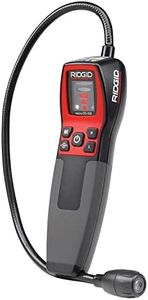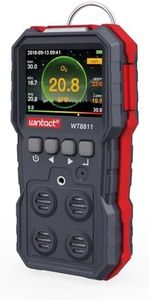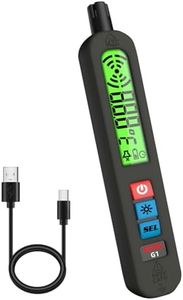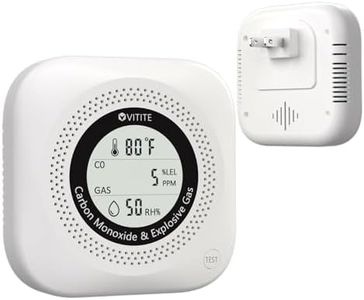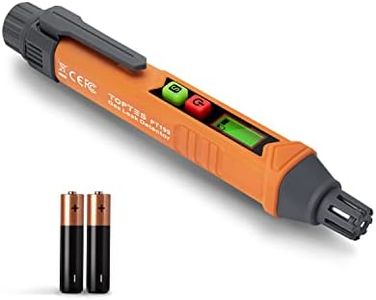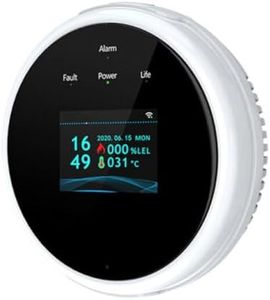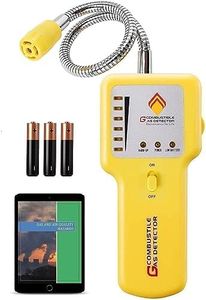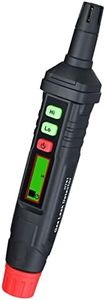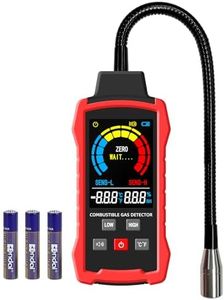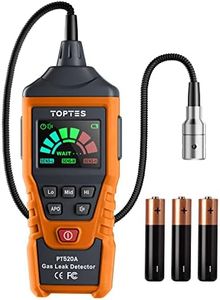We Use CookiesWe use cookies to enhance the security, performance,
functionality and for analytical and promotional activities. By continuing to browse this site you
are agreeing to our privacy policy
10 Best Gas Leak Detectors
From leading brands and best sellers available on the web.Buying Guide for the Best Gas Leak Detectors
Choosing a gas leak detector can be vital for your safety, whether at home or in a workplace. The right detector should reliably alert you to the presence of hazardous gases before a dangerous situation develops. When comparing options, you'll want to understand how different types work, what they are sensitive to, and how user-friendly they are. Your main goal should be to pick a detector that matches where and how you plan to use it, so you get timely alerts without false alarms or missed leaks.Gas Types DetectedThis spec indicates which gases the detector can sense, which is crucial because not all detectors pick up the same substances. Some detectors are designed for natural gas (methane), others for propane, butane, or even carbon monoxide. When shopping, check the device’s list of detectable gases. If you only use natural gas, a methane-specific detector is enough. If you need to monitor multiple gas types (like in an RV or garage), look for a multi-gas model. Your safety needs and potential gas sources in your environment should guide your choice.
Sensor TypeThe sensor type refers to the technology used inside the detector to sense gas, such as catalytic bead, semiconductor, or infrared. Each has pros and cons: for example, catalytic sensors are widely used for combustible gases, while semiconductors are popular for home use due to reliability. Infrared sensors are more common in industrial settings for quick, precise detection. When navigating sensors, consider reliability, maintenance, and suitability for your environment. If you need a low-maintenance home detector, a basic semiconductor sensor might be best. For industrial use, higher-accuracy types like infrared could be warranted. Think about where and how the detector will be used.
Sensitivity LevelSensitivity describes how small a gas concentration the detector will recognize, usually measured in parts per million (ppm). Higher sensitivity means the alarm sounds at lower gas levels. Residential models often trigger at concentrations safe for most homes, while industrial models may offer more precise adjustment. When picking sensitivity, consider your comfort with early alarms versus potential false alarms: for general home use, standard sensitivity is usually sufficient, but if you have special needs (like a small space or vulnerable individuals), higher sensitivity may be better.
Alarm Type and LoudnessAlarm type tells you how a detector will alert you—sound, light, vibration, or a combination. The loudness is measured in decibels (dB). A good alarm should be loud and clear enough to wake or alert people even in other rooms. You might want a visual indicator as well for those with hearing difficulties. When selecting, think about where you'll install the device: crowded or noisy environments need a louder alarm, while a quiet home might be fine with a standard beep.
Power SourceDetectors typically run on batteries, direct plug-in, or hardwired power. Battery-powered models offer placement flexibility and work during power outages, but need regular battery changes. Plug-in models are convenient for long-term use but are limited by outlet locations. Hardwired units are permanent and reliable but require professional installation. Your choice should reflect where you need the detector—frequent moves or temporary setups favor batteries, while fixed, long-term protection might benefit from plug-in or hardwired options.
Display and User InterfaceSome detectors have digital displays indicating gas levels and alert status, while others rely on basic lights or sounds. A display can help by showing real-time readings, battery level, or error codes. Consider how much information you want: if you like data or want more control, choose a model with a clear display. If you prefer simple alerts, a model with indicator lights may be sufficient. Ease of use should match your comfort level, ensuring you can interpret alerts and maintain the device easily.
Certification and StandardsCertifications mean the device meets certain safety and accuracy standards, such as those from UL or similar agencies. This ensures reliability and performance in detecting gas leaks. Always check for recognized certifications before buying, as uncertified units might not perform as expected. Opting for a certified detector adds peace of mind, especially if you're not able to test or calibrate the device yourself.


